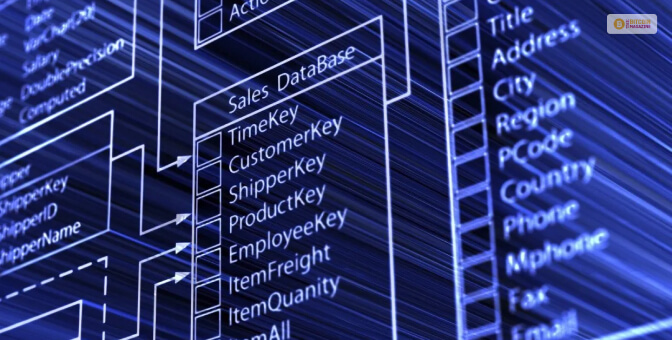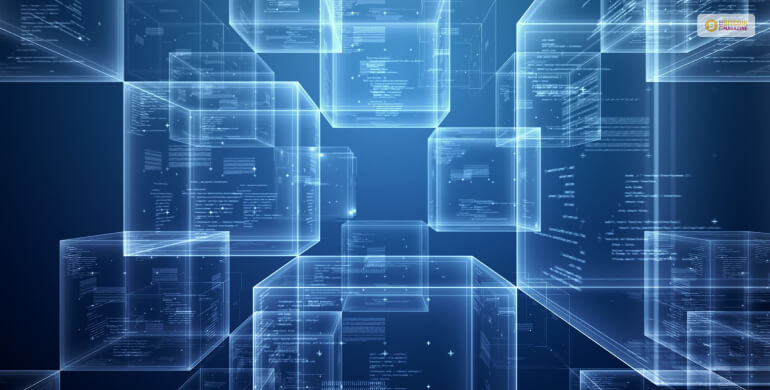You already know that blockchain is a distributed and decentralized system that enables multiple parties to store and maintain shared data without depending on any central authority. In order to understand the differences between a traditional database, it is vital to consider how each of these is maintained or even designed for the better part.
On the other hand, traditional databases are centralized systems that are typically managed by either a single entity or an organization. So, how is blockchain different from traditional database models? There is more than one difference between the two, and today, we are here to point them out.
Let’s dive in…shall we?
So, How Is Blockchain Different From Traditional Database Models?

So, how is blockchain different from traditional database models?
The primary difference between traditional databases and blockchain technology is in terms of the trust required for running traditional services. With the help of blockchain technology, you are not trusting the ones responsible for running it but the protocol instead.
Today, let’s discuss the primary differences between traditional database models and blockchain technology.
1. Decentralization:
The most crucial difference between traditional databases and blockchain technology is that blockchain happens to be a decentralized system. This indicates that there is no such central authority that controls the network, and all the individual participants have equal authority and power over all the data. Traditional databases, in contrast, are controlled by an entity or a single organization.
2. Immutability:
One of the primary features of blockchain technology is that the information stored on this particular network is entirely immutable, meaning it cannot be tampered with or changed. This is obtained through the use of crypto techniques like digital signatures and hashing.
Traditional databases, in contrast, are often relatively vulnerable to tampering of sorts since these are controlled by a small group of entities or a single entity.
3. Consensus Mechanisms:
Blockchain tech utilizes consensus mechanisms to ensure that all the nodes in the network agree on the database’s state. This enables the network to maintain an absolutely shared version of the truth, even when malicious actors are present.
Traditional databases, in contrast, depend on a small group of entities or on a single entity to maintain the overall integrity of the information.
4. Transparency:
The information on the blockchain is transparent, meaning that all the transactions are visible publicly and can technically be audited by just about anyone. Traditional databases, in contrast, are typically protected by access control and are not actually transparent by default.
5. Intermediary-less:
Blockchain can actually operate as a peer-to-peer network, which means that the transactions can directly take place between the parties that do not have the requirement for intermediaries. This enables an increase in efficiency and a decrease in transaction costs.
Traditional databases, in contrast, depend on intermediaries like banks as well as other financial institutions in order to facilitate transactions.
For instance, in any traditional supply chain, goods are actually tracked with the help of centralized databases that are usually managed by individual organizations. This naturally makes it complex to obtain a big picture of the supply chain since data is already siloed and cannot be accessed easily.
Real-Life Examples Of Traditional Database Models Versus Blockchain Technology:

Now that you know how is blockchain different from traditional database models, chances are you are still a little confused. This is precisely why we think some real-life examples can actually help you understand how blockchain technology is distinctively different from traditional database models.
The examples we have mentioned below show how blockchain tech can be utilized effectively for creating efficient, transparent, and decentralized systems across different industries, while traditional models of databases are prone to errors, opaque, centralized, and open to security issues.
1. Banking And Finance:
Blockchain technology is utilized for creating decentralized financial models like Bitcoin and other cryptos. These systems enable peer-to-peer transactions without the requirement for intermediaries like banks.
On the other hand, traditional banks depend on centralized databases for managing their customer information and transaction data.
2. Supply Chain Management:
Blockchain technology is often used for creating transparent as well as effective supply chain management systems. For instance, Walmart is actually using blockchain technology to track the movement of different goods from the farm to the store, enabling greater traceability and transparency.
On the other hand, traditional models of supply chain management systems depend on centralized databases that are typically managed by individual organizations.
3. Identity Management:
Blockchain is used for creating self-sovereign, decentralized systems like the Evernym and uPort. These are the systems that enable individuals to control as well as manage their personal information. On the other hand, traditional identity management systems depend on centralized databases managed by different governments as well as other organizations.
4. Land Registry:
In countries like Ukraine, Sweden, and Ghana, blockchain technology is being trialed as a primary solution for issues related to land registry. This initiated more security and transparency, along with the ability for different individuals to prove their land ownership while streamlining the procedure for buying as well as selling land.
Traditional systems for land registry, on the other hand, depend on centralized databases that are typically managed by different governments and organizations. These databases can easily be vulnerable to security breaches and corruption. Not just that, these databases can also be prone to multiple errors, leading to disputes.
5. Digital Advertising:
Blockchain technology is used for creating digital advertising networks that are decentralized and, more importantly, transparent, like Basic Attention Token and Brave. These systems often aim to address different issues like fraud as well as lack of transparency in traditional modes of digital advertising, which entirely depend on centralized databases.
And It’s A Wrap!
Now that you know how is blockchain different from traditional database models, and you have real-life examples of the same, what are your thoughts? Are you still worried about using the blockchain technology? Or are you still putting your faith in traditional database models?
Feel free to share your thoughts, opinions, and experiences related to using blockchain technology to store data in the comments below.
Additional Reading:

